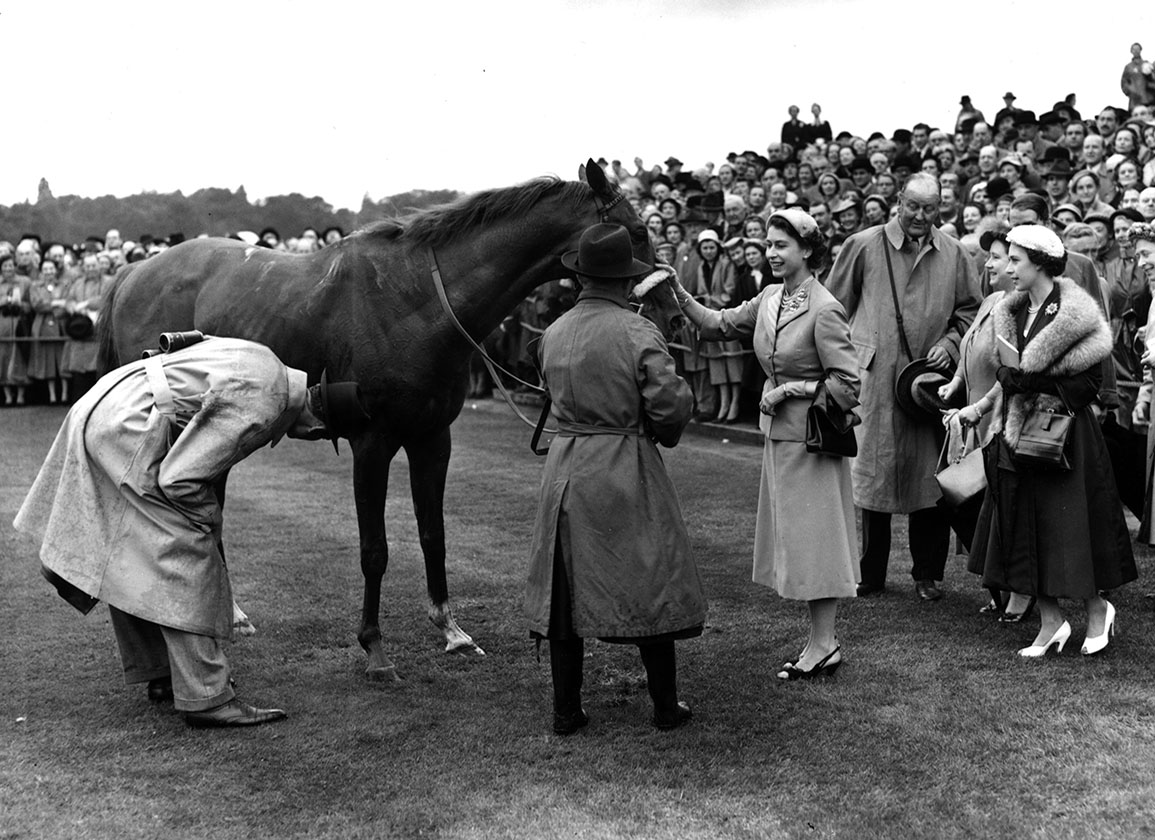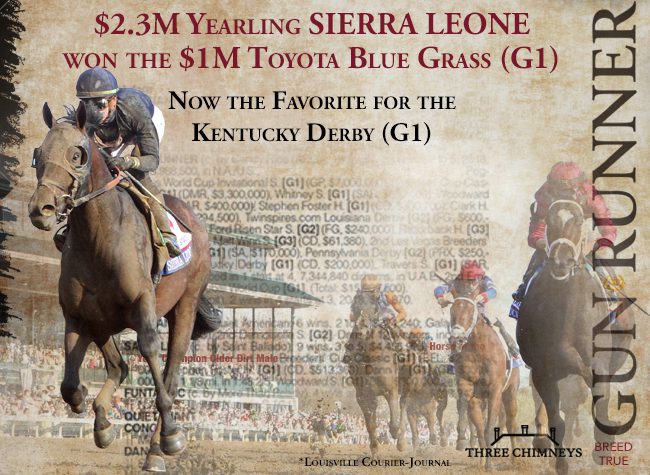A significant milestone in British history is reached on Sunday as the Queen becomes the country's first monarch to reign for 70 years. Throughout that time, Her Majesty has remained a fervent supporter of the Turf. In the first of a three-part series, John Berry looks back at the Queen's strong ties to horseracing.
Racing, the king of sports, has been the sport of kings and queens since the dawn of time. In Great Britain, the monarch's love of the sport can be traced back at least 500 years to the passion which the Stuart kings brought to Newmarket and thus established the town and its Heath as the centre of the racing world. King Charles II famously rode in races on the Heath, while the following century Queen Anne's love of the sport resulted in a racecourse being founded on Ascot Heath in 1711, a short carriage-ride from Windsor Castle. Racegoers at Royal Ascot are reminded of her creation every year when the meeting starts with the G1 Queen Anne S.
No monarch, though, has given a greater commitment to the sport over a longer period than Her Majesty Queen Elizabeth II, whose 70 years on the throne represent seven decades as the greatest, most passionate, unwavering and knowledgeable patron any sport could ever have.
Queen Elizabeth II has followed perfectly in the footsteps of her great-grandfather King Edward VII. He, though, only spent a relatively short time (nine years) on the throne, having already reached the age of 59 by the time that his mother Queen Victoria passed away on Jan. 22, 1901, aged 81. She remained famously unamused by the sport, but he was as passionate as she was uninterested. Many of his greatest years as an owner (including 1896 when the homebred Persimmon landed the Derby and St Leger; 1897 when Persimmon won the Gold Cup and the Eclipse S.; and 1900 when he raced not only his homebred Triple Crown winner Diamond Jubilee but also the Grand National winner Ambush II) came while he was still Prince of Wales, but he remained an equally enthusiastic and successful patron of the sport after ascending to the throne. Most notably, he won the Derby for a third time when Minoru took the great race in 1909, the first time that the Derby winner had been owned by the monarch.
King Edward VII's focus on racing remained steadfast to the very end. His dying words, on May 6, 1910, came after his son, who was about to become King George V, had informed him of the victory that afternoon of his horse Witch Of The Air in the 4.15 at Kempton Park: “Yes, I have heard of it. I am very glad.”
Arguably King Edward VII's most significant act as regards the development of the royal racing enterprise was to create a stud at Sandringham in Norfolk in 1886. A stream of royal winners started to flow from Sandringham Stud almost immediately, and they still do to this day.
King George V had inherited his father's passion for the sport and he in turn passed it on to his sons. He also did plenty to light the flame in the heart of his young grand-daughter, the future Queen Elizabeth II. In the spring of 1928 he became the first monarch to win the 1000 Guineas as both owner and breeder with the victory of Scuttle, trained by William Jarvis in the royal stables at Egerton House on the western edge of Newmarket Heath. That evening he wrote in his diary, “I am very proud to win my first Classic and that I bred her at Sandringham”. He later enthralled his favourite grand-daughter with the tale of how the filly, ridden by Joe Childs, played up at the barrier and dwelt as the tapes went up but ultimately came off best at the end of a thrilling duel with Gordon Richards' mount Jurisdiction.
King George V's elder son, the future King Edward VIII, while Prince of Wales threw himself into the sport with such enthusiasm that questions were asked in Parliament by disapproving MPs about whether it was satisfactory that the future king was risking his neck riding in races and point-to-points. Once he had become the monarch, though, King Edward VIII became more famous for triggering constitutional debates on considerably more serious subjects, the upshot of which was his abdication in favour of his younger brother, who thus became King George VI, on Dec. 11, 1936.
King George VI, the father of our current monarch, thus was not born to be the king, but had the crown unexpectedly thrust upon him. He did not let this abrupt and unexpected turn of events interfere with his love of racing. Far from it: the royal colours flourished while in his possession, as is confirmed by the famous photograph of him, wearing his military uniform, leading Sun Chariot into the winner's enclosure at Newmarket's July Course after her triumph in the wartime substitute Oaks in 1942. She had previously won the 1000 Guineas and subsequently completed the Triple Crown by taking the St Leger. Furthermore, Big Game took that year's 2000 Guineas, giving the King victory in four of the five Classics. After the end of the war, he won the 1000 Guineas again when Hypericum scored in 1946, with Princess Elizabeth present to welcome the daughter of Hyperion back to scale.
The elder of King George VI's two daughters, Queen Elizabeth II was aged only 25 when her father died on Feb. 6, 1952. Thus began the longest and arguably most successful reign in British history, a reign during which, leading by example, she has steered the country through the enormous changes which society has undergone since the Second World War. It has also been a reign in which her never-diminishing love of racing has seen the sport immeasurably enriched by the passion of its greatest patron.
As regards her father, from a racing man's point of view he could have had no better epitaph than that which appeared in Cope's Royal Cavalcade of the Turf, published in 1953. King George VI's last top-class horse had been Hypericum's Straight Deal half-sister Above Board, who enjoyed a splendid season in 1950, winning the Yorkshire Oaks, Park Hill S. and Cesarewitch H. Reflecting on that magnificent six-length Cesarewitch triumph, Alfred Cope wrote, “With the cheers for that splendid Royal victory ringing in our ears, it is perhaps a suitable moment to take our leave of a King who, of all the Kings and Queens of the Turf, will be remembered in years to come as one who, by his example, raised the Crown to undreamed-of popularity and respect, while his Turf career brought back to not a few of the older generation some trace of those golden hours they had known when Edward VII was King.”
Having become Queen aged 25 on the death of her father in 1952, Queen Elizabeth II was not crowned until the following year when a splendid ceremony was held in Westminster Abbey–a ceremony which the world was able to enjoy as it was the first coronation to be televised. That, though, was not The Queen's only major event that week. Fittingly, the sport of kings loomed large in her consciousness even during that momentous period. The Coronation took place on Tuesday, June 2 and when the Derby was run four days later she had the thrill of owning one of the leading chances: the Hyperion colt Aureole, a close relative of Hypericum, who had won the Lingfield Derby Trial the previous month.
Queen Elizabeth II had taken over ownership of the royal string on the death of her father the previous year. She had previously owned one Flat winner: Astrakhan, who had been given to her as a wedding present by the Aga Khan III in 1947 and who won a maiden race at Hurst Park in her own colours of 'scarlet, purple hooped sleeves, black cap'. Her first winner as Queen was the 3-year-old Hyperion colt Choir Boy at Newmarket in the spring of 1952, but he did not race that day in the royal livery: while the court was in mourning it was decided that any royal runners carry the colours of the Duke of Norfolk. The period of mourning had finished by the time that the Lancashire Oaks was run at Manchester, and the victory in that race by Stream Of Light provided the Queen with her first success with the royal colours. Her best horse in 1952, though, was the 2-year-old Aureole, who made a winning debut in the Acomb S. at York's Ebor Meeting before finishing unplaced in the Middle Park S. at Newmarket in the autumn.
Aureole's second place in the 1953 Derby behind Pinza (whose jockey Gordon Richards had just been awarded a knighthood in the Coronation honours) was wonderful. The magical spell continued at Royal Ascot where Choir Boy, who had had to miss the remainder of the previous season after splitting a pastern, completed a great comeback from injury by taking the Royal Hunt Cup. Another special event that week came when the Queen appointed her trainer Cecil Boyd-Rochfort a Commander of the Royal Victorian Order, investing him at Ascot. A further thrill came in the autumn when Aureole took the Cumberland Lodge S. at Ascot.
The first foal of Hypericum's Donatello half-sister Angelola (who had won the Lingfield Oaks Trial, Yorkshire Oaks and Newmarket Oaks in 1948 for King George VI and finished second in the Oaks), Aureole did even better at four. In the summer of 1954 he won three feature races: at Epsom in the Coronation Cup, at Royal Ascot in the Hardwicke S. and at Ascot in the race named after The Queen's parents, the King George VI And Queen Elizabeth S. At Royal Ascot he was part of a double for The Queen on the final day of the meeting, with the impeccably-bred Landau (who was by the 1945 Derby winner Dante from Sun Chariot) taking the Rous Memorial S. under Gordon Richards. Later in the summer Landau, who was leased from the National Stud as his dam had been, won the Sussex S. at Goodwood.
At the end of the year, The Queen became champion owner for the first time, with a prize-money total of £40,993 (three quarters of which was won by Aureole) from her 19 wins. Second place, with roughly £1,000 less, was taken by Sterling Clark, whose 25 wins included the Derby triumph of Never Say Die, the first Kentucky-bred to win the greatest race of all. The Queen thus emulated the achievement of her great-grandfather King Edward VII who (while Prince of Wales) had been champion owner in 1900 and of her father King George VI, who had been champion owner in 1942.
Tomorrow: A second championship and a first homebred Classic winner
Not a subscriber? Click here to sign up for the daily PDF or alerts.






